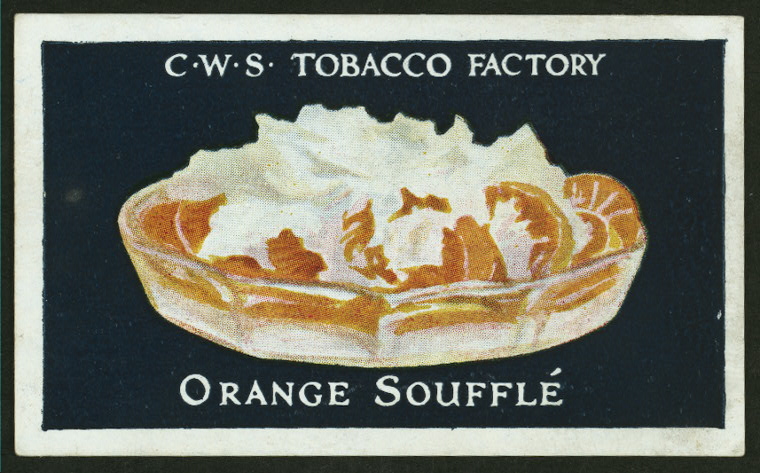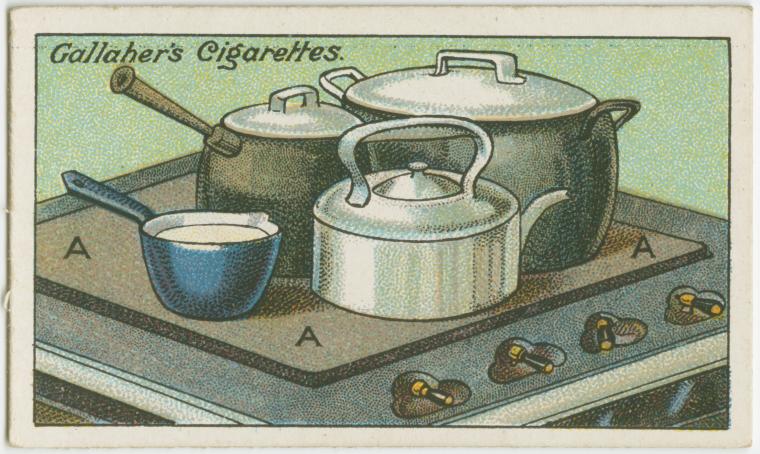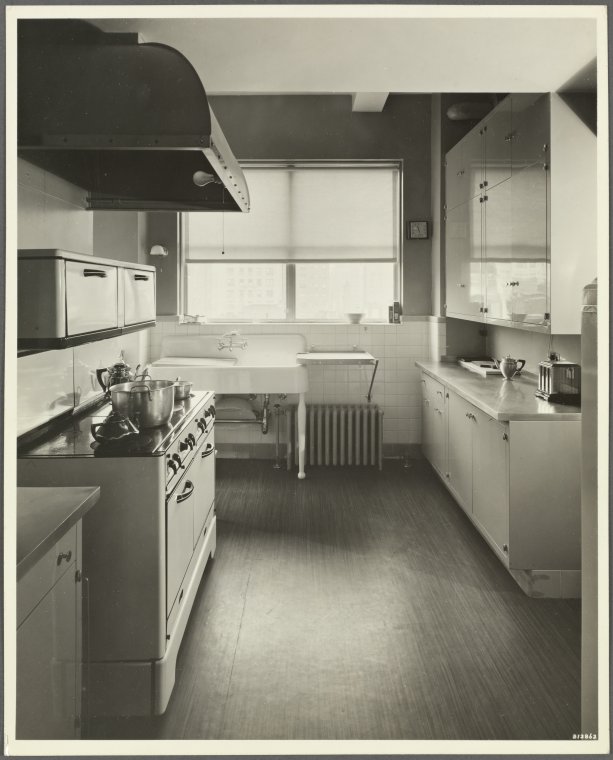Food for Thought, Lifelong Learning
The Art and Science of Cooking

Now, I know baking is all about scientific precision! Leavening agents have to be in just the right proportion, temperatures must be consistent, or your soufflé or biscuits fail to rise, and your dinner plans fall flat. The reason I put my measuring cup away is because last year I got the best Christmas present... a small digital scale. No more scooping flour for me! 3 cups of flour is equivalent to 14 ounces. I poured right into my mixing bowl, and then added the sugar on top (7.1 ounces of it.)
Why don't we cook and bake like this all the time? The answer: Fannie Farmer. According to Bee Wilson in Consider the Fork: A History of How We Cook and Eat, the U.S. is the only country that measures food in cups, and Fannie Farmer's publications, while popularizing the modern cookbook, might be to blame. Wilson goes on to explain the history of recipes as a way to ensure reproducable results in the kitchen. But when our ovens are not the exact temperature, our frying pan has a hot spot, we measure too much flour, or forget the salt entirely, dinner can be ruined.

Content on the Cook's Illustrated website is behind a paywall, but don't you know, the library has dozens of Cook's Illustrated, Cook's Country, and America's Test Kitchen books, DVDs, and magazines.
Somewhere on the opposite end of the how-to spectrum is Mark Bittman's How to Cook Everything series of cookbooks. While the sheer volume and types of recipes you can find within these titles probably comes close to matching what CI has to offer, Bittman has a much more relaxed approach and encourages substitutions based on what you enjoy and happen to have on hand.

Remember when earlier I told you that 3 cups of flour is equivalent to 14 ounces? Do you want to know how I knew that? Wolfram|Alpha has a "culinary mathematics" app that makes it easy to convert volume measurements to weight. You can probably do this in their regular app or on their website, but having cooking tools all together in one place is certainly convenient. Another place to do these types of calculations is onlineconversion.com.
 Ratio and Culinary Math apps on an iPhoneKitchen confidence means having that intuition that lemon and parsley taste good together, and that chili spices can deepen with a hit of bitter chocolate. The Flavor Thesaurus: A Compendium of Pairings, Recipes and Ideas for the Creative Cook can take your "gut instincts" to the next level. Niki Segnit has arranged flavors into a wheel where each distinct flavor is related to the ones around it: roasted, meaty, briney, fresh fruity, citrus, woody, spicy, grassy (the kinds of descriptors you see for perfumes — they are very much based in smell.) She picks out the best examples of foods for each flavor. Then she goes through each food and describes the pairings that you can do across flavors and what each pairing will achieve. There are some surprising combinations, but you can tell that she has done her research and actually eaten these things — she provides more than adequate support and reasoning for you to get a little experimental with your cooking.
Ratio and Culinary Math apps on an iPhoneKitchen confidence means having that intuition that lemon and parsley taste good together, and that chili spices can deepen with a hit of bitter chocolate. The Flavor Thesaurus: A Compendium of Pairings, Recipes and Ideas for the Creative Cook can take your "gut instincts" to the next level. Niki Segnit has arranged flavors into a wheel where each distinct flavor is related to the ones around it: roasted, meaty, briney, fresh fruity, citrus, woody, spicy, grassy (the kinds of descriptors you see for perfumes — they are very much based in smell.) She picks out the best examples of foods for each flavor. Then she goes through each food and describes the pairings that you can do across flavors and what each pairing will achieve. There are some surprising combinations, but you can tell that she has done her research and actually eaten these things — she provides more than adequate support and reasoning for you to get a little experimental with your cooking.
For more on this theme, see this list of books and ebooks in BiblioCommons. Are you a kitchen scientist? Any books, tools, or recipes you can recommend?
Books
- Consider the Fork: A History of How We Cook and Eat By Bee Wilson (2012)
- Cooking for Geeks: Real Science, Great Hacks, and Good Food By Jeff Potter (2010)
- The Flavor Thesaurus: A Compendium of Pairings, Recipes and Ideas for the Creative Cook By Niki Segnit (2010)
- How to Read A French Fry And Other Stories of Intriguing Kitchen Science By Russ Parsons (2003)
- The Hungry Scientist Handbook: Electric Birthday Cakes, Edible Origami, and Other DIY Projects for Techies, Tinkerers, and Foodies By Patrick Buckley (2008)
- Keys to Good Cooking: A Guide to Making the Best of Foods and Recipes By Harold McGee (2010)
- Kitchen Mysteries: Revealing the Science of Cooking By Hervé This (2007)
- Kitchen Science: A Guide to Knowing the Hows and Whys for Fun and Success in the Kitchen By Howard Hillman (1989)
- Maximum Flavor: Recipes That Will Change the Way You Cook By Aki Kamozawa (2013)
- Modernist Cuisine: The Art and Science of Cooking By Nathan Myhrvold (2011)
- Movable Feasts: The History, Science, and Lore of Food By Gregory McNamee (2007)
- On Food and Cooking: The Science and Lore of the Kitchen By Harold McGee (2004)
- The Physiology of Taste: Or, Transcendental Gastronomy By Brillat-Savarin
- Ratio: The Simple Codes Behind the Craft of Everyday Cooking By Michael Ruhlman (2009)
- The Science of Good Cooking: Master 50 Simple Concepts to Enjoy A Lifetime of Success in the Kitchen (2012)
- The Science of the Oven By Hervé This (2009)
- Taste Buds and Molecules: The Art and Science of Food, Wine, and Flavor Francois Chartier (2012)
- Taste What You're Missing: The Passionate Eater's Guide to Why Good Food Tastes Good By Barb Stuckey (2012)
- The Way Kitchens Work: The Science behind the Microwave, Teflon Pan, Garbage Disposal, and More By Edwin J. C. Sobey (2010)
- What Einstein Told His Cook: Kitchen Science Explained By Robert L. Wolke (2002)
- What Einstein Told His Cook 2: The Sequel: Further Adventures in Kitchen Science By Robert L. Wolke (2005)
eBooks
- Culinary Reactions: The Everyday Chemistry of Cooking By Simon Field (2012)
- The Hungry Scientist Handbook: Electric Birthday Cakes, Edible Origami, and Other DIY Projects for Techies, Tinkerers, and Foodies By Patrick Buckley (2008)
- Kitchen as Laboratory: Reflections on the Science of Food and Cooking (eBook - 2012)
- The Physiology of Taste: Or, Transcendental Gastronomy By Brillat-Savarin
Read E-Books with SimplyE
 With your library card, it's easier than ever to choose from more than 300,000 e-books on SimplyE, The New York Public Library's free e-reader app. Gain access to digital resources for all ages, including e-books, audiobooks, databases, and more.
With your library card, it's easier than ever to choose from more than 300,000 e-books on SimplyE, The New York Public Library's free e-reader app. Gain access to digital resources for all ages, including e-books, audiobooks, databases, and more.
If you don’t have an NYPL library card, New York State residents can apply for a digital card online or through SimplyE (available on the App Store or Google Play).
Need more help? Read our guide to using SimplyE.
Comments
"Tell me what you eat, and I will tell you who you are."
Submitted by Elizabeth (not verified) on December 31, 2012 - 11:41am